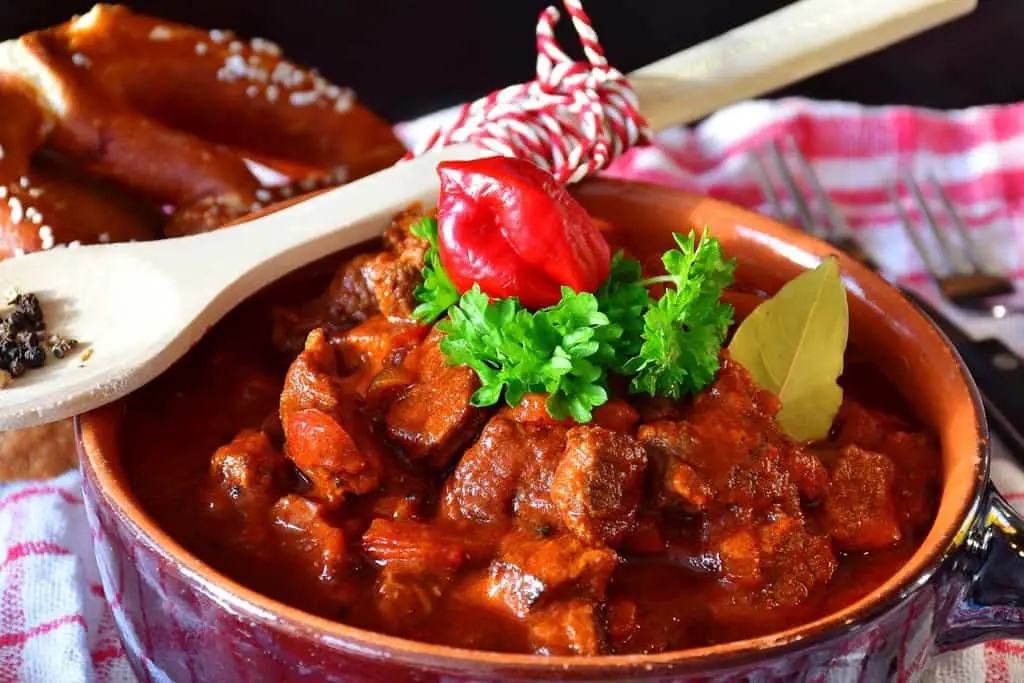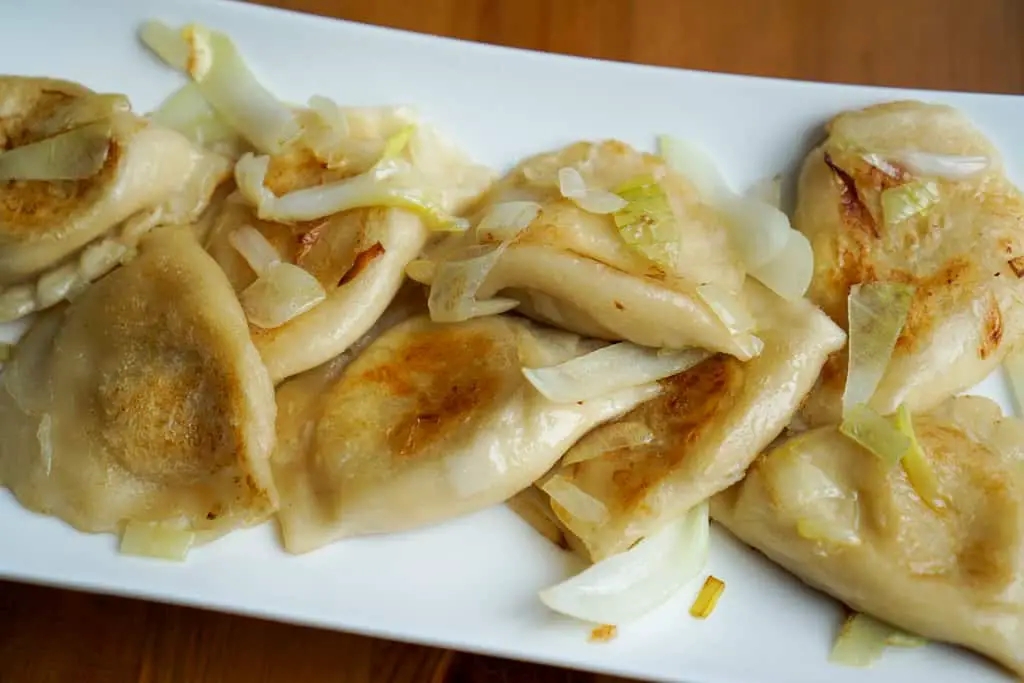10. Haggis (Scotland)

Haggis is the first thing that comes to mind when you ask someone to describe Scottish food. This savoury dish is made from mashed up sheep offal, and then stuffed in the stomach of an animal. Haggis may sound disgusting, but it’s actually quite tasty.
The traditional haggis is eaten on Burns Night, the 25th of January. This is when Robert Burns’ poem’address to a Haggis ‘is read. The haggis is usually served with neeps and tatties, before being washed away with Scotland’s best drink a small dram whisky.
The dish can be found in many restaurants and fish and chips shops throughout the year. You can enjoy a delicious haggis dinner by ordering a deep-fried sausage haggis to go with your chips. You can also head to an Indian eatery where they have delicious haggis pakoras.
11. Goulash (Hungary)

Goulash, a national dish of Hungary, is also a great choice for comfort food. This stew is full of flavour and vegetables, but its main characteristic is the heavy paprika seasoning.
This dish is very old and is thought to have been eaten by Hungarian Shepherds in the 9th Century. The meat was dried out in the sun during this period and the stew did not contain paprika. This spice was introduced in the 16th Century.
Goulash is derived from the Hungarian ‘gulya,’ which means a herd of cattle. Over time, ‘gulyashus,’ which is goulash prepared by cowboys, evolved.
12. Pastel de Nata (Portugal)

This is for you sweet-toothed people. Portugal’s famous custard egg tart. These tasty treats, served hot from the oven and dusted with cinnamon or sugar, are very popular in Portugal as well as former Portuguese colonies like Brazil.
Around the 18th century, the monks of Jeronimos Monastery at Santa Maria de Belem invented Pastel de Nata. In this time, egg whites were used to starch the nuns’ habits. The monks decided to bake the yolks leftovers into pastel de Nata in order to use up all the ingredients.
A Portuguese proverb says that a bride who eats pastry will never remove her ring. It has therefore become part of the wedding celebrations that the bride and groom visit a traditional Portuguese baker to enjoy a pastel de Nata as a sign of good luck.
13. Pierogi (Poland)

Pierogi are a type of dumplings that is eaten throughout Eastern Europe, including Poland. The dough is wrapped around sweet or savoury fillings, and then they are fried. In Poland, fillings include cheese, potatoes, buckwheat, and sauerkraut. If you have ever visited Nepal you might think that pierogi are similar to the Asian Street Food momos.
There are several legends about pierogi. Saint-Hyacinth visited Koscielec, and during her visit a storm destroyed the crops. Hyacinth instructed the people to pray, and the next day the crops began to grow again. As a reward for the miracle, they made pierogi and presented them to Saint Hyacinth. Saint Hyacinth is now the patron saint for pierogi.
If you want to try this dish authentically, visit any of the “Pierogarnia” in Poland. This is a special type of restaurant that specializes in pierogi.